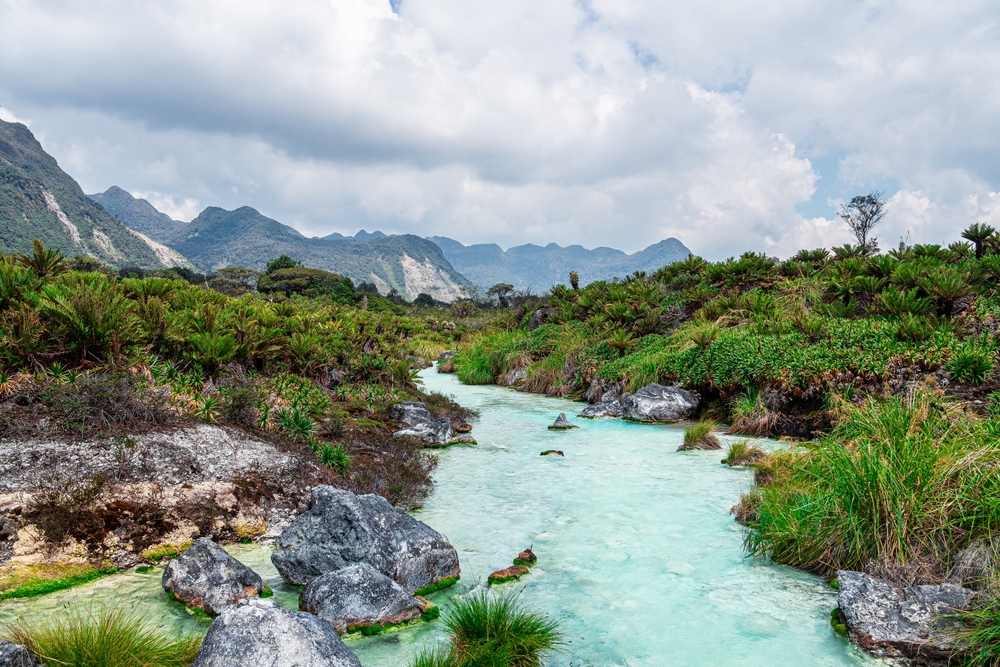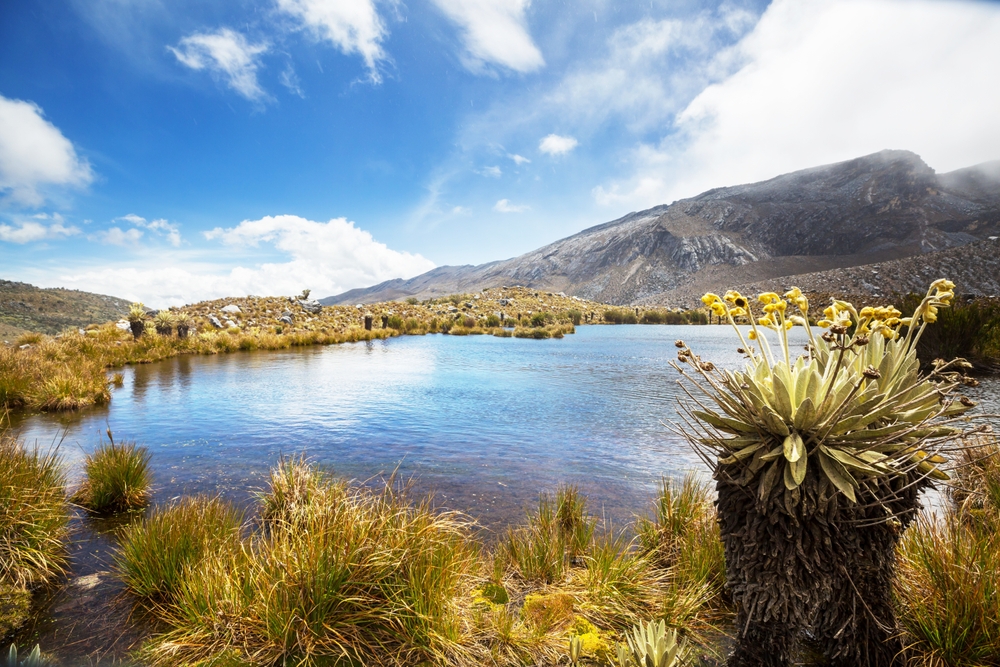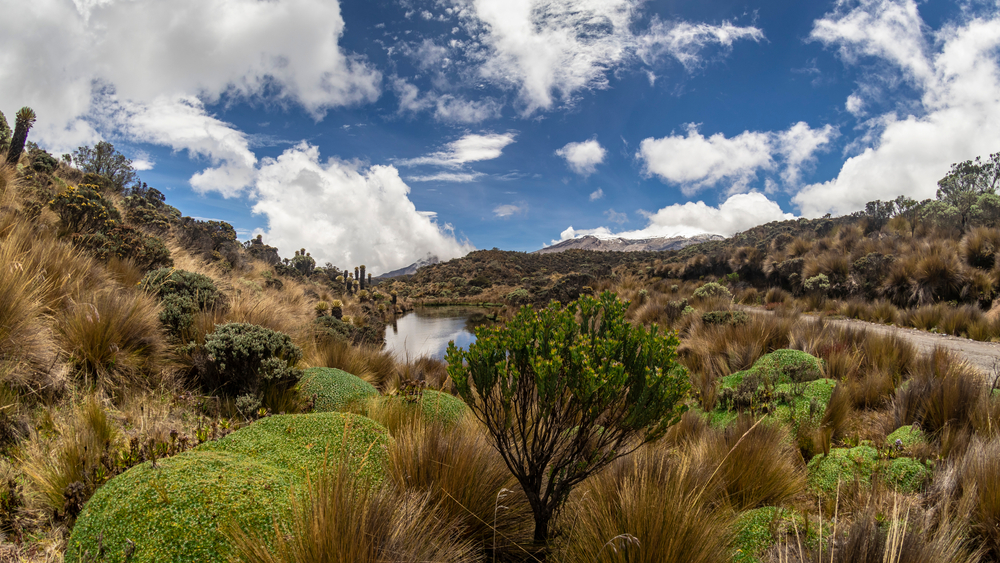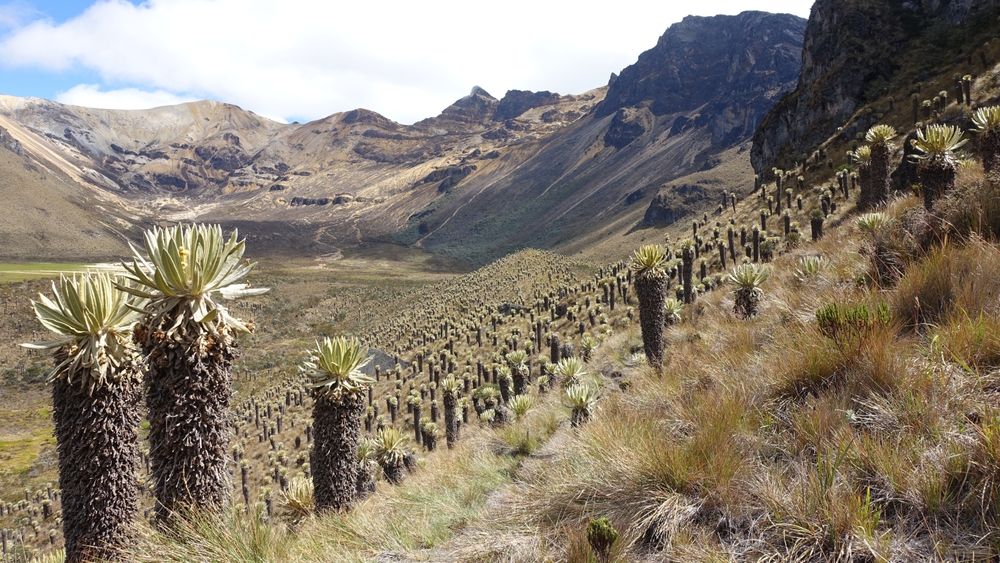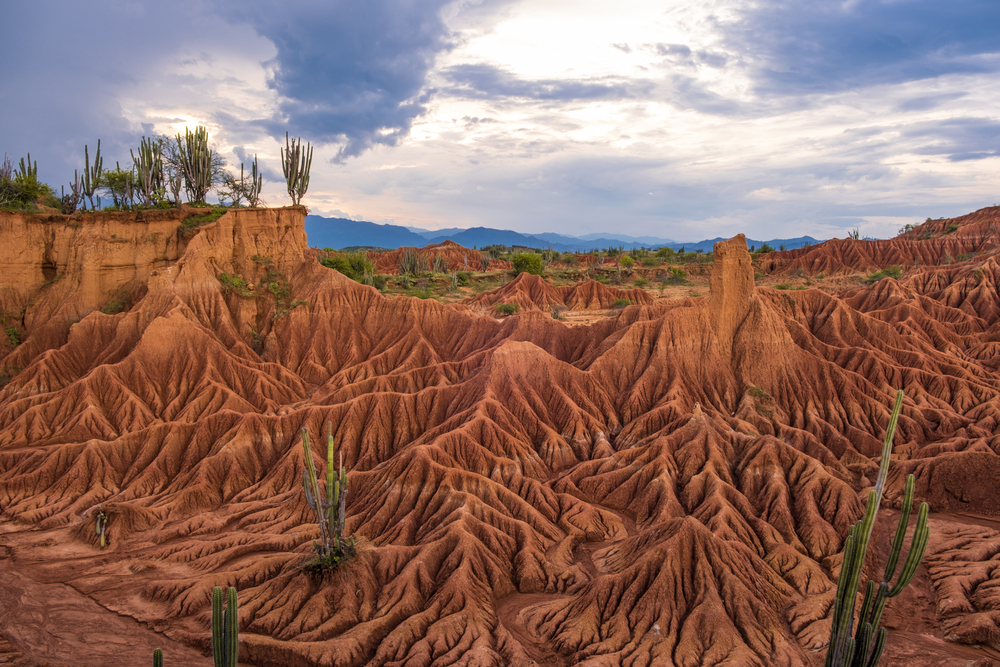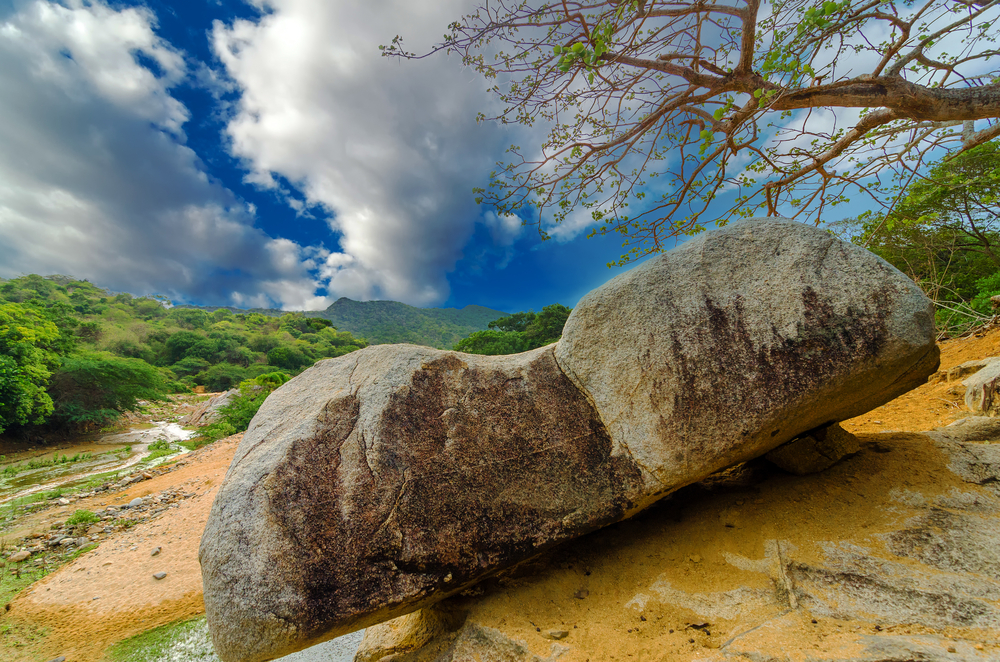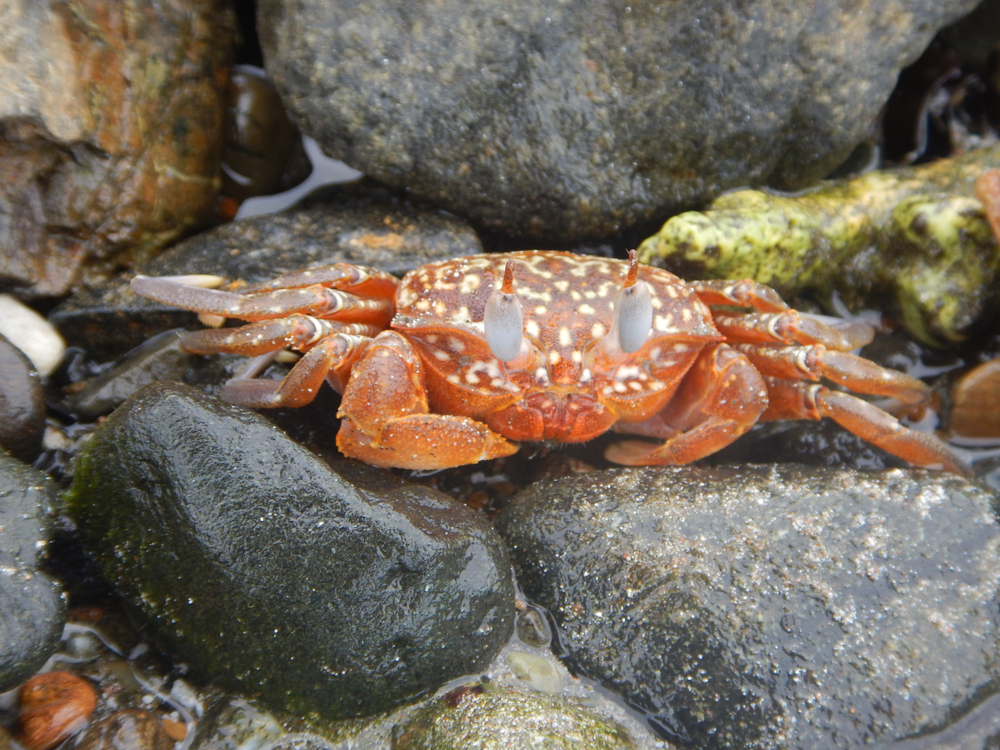Purace Overview
Puracé National Park, known as Parque Nacional Natural Puracé in Spanish, is a stunning protected area in southwestern Colombia. Spanning approximately 321 square miles (830 square kilometers), it is located in the Andes mountains within the departments of Cauca and Huila.
The park is named after the Puracé Volcano, an active stratovolcano that dominates the landscape and contributes to the region’s geothermal activity. The terrain is defined by a mix of volcanic peaks, deep canyons, cloud forests, and páramo ecosystems, creating a dramatic and ever-changing environment.
The Magdalena, Cauca, Patía, and Caquetá rivers originate in the park, making it a crucial water source for the region. The páramo is covered in frailejones, a unique plant adapted to high-altitude environments, while lower elevations support lush cloud forests filled with mosses, orchids, and bromeliads.
Wildlife is abundant in Puracé National Park, offering visitors a chance to see some of Colombia’s most iconic species. The Andean condor, a national symbol, is one of the park’s most famous residents, and visitors often come specifically to witness its majestic flight.
Other bird species include the Andean cock-of-the-rock, toucans, and hummingbirds that thrive in the cloud forests. Mammals such as spectacled bears, pumas, and tapirs roam the park, though they are elusive and rarely seen. Monkeys, deer, and armadillos also inhabit the diverse ecosystems, contributing to the park’s rich biodiversity.
One of the most popular features of the park is the Puracé Volcano, which stands at approximately 15,617 feet (4,760 meters) and is one of Colombia’s most active volcanoes. Its sulfuric hot springs and fumaroles are a testament to the region’s geothermal activity, making it a unique place for visitors.
The San Juan Hot Springs and the Termales de San Nicolás offer warm, mineral-rich waters where visitors can relax while taking in the surrounding scenery. The park is also home to the Laguna de San Rafael, a high-altitude lake that adds to the park’s mystique, as well as numerous waterfalls, including the stunning Bedón and Nicolás waterfalls.
Visitors can experience Puracé National Park through a variety of activities, with hiking being one of the most popular. Trails lead to scenic viewpoints, waterfalls, and hot springs, offering breathtaking views of the rugged terrain. The trek to the summit of Puracé Volcano is a challenging yet rewarding experience for adventurous hikers.
Birdwatching is another major attraction, particularly at the Andean condor viewpoint, where these majestic birds are known to gather. Guided tours with local Indigenous communities provide insight into the cultural and ecological significance of the park, as the region is traditionally inhabited by the Kokonuko people, who help manage conservation efforts.
Conservation in Puracé National Park is both a challenge and a success. The park is a designated UNESCO Biosphere Reserve, highlighting its ecological importance. However, threats such as illegal mining, deforestation, and climate change pose risks to the fragile páramo and cloud forest ecosystems.
Despite these challenges, conservation efforts have led to the successful reintroduction and monitoring of the Andean condor population. Collaboration with Indigenous communities has also strengthened conservation programs, ensuring that traditional knowledge plays a role in protecting the park’s natural heritage.
Sustainable tourism initiatives continue to be developed, promoting responsible visitation while supporting local communities.








































































